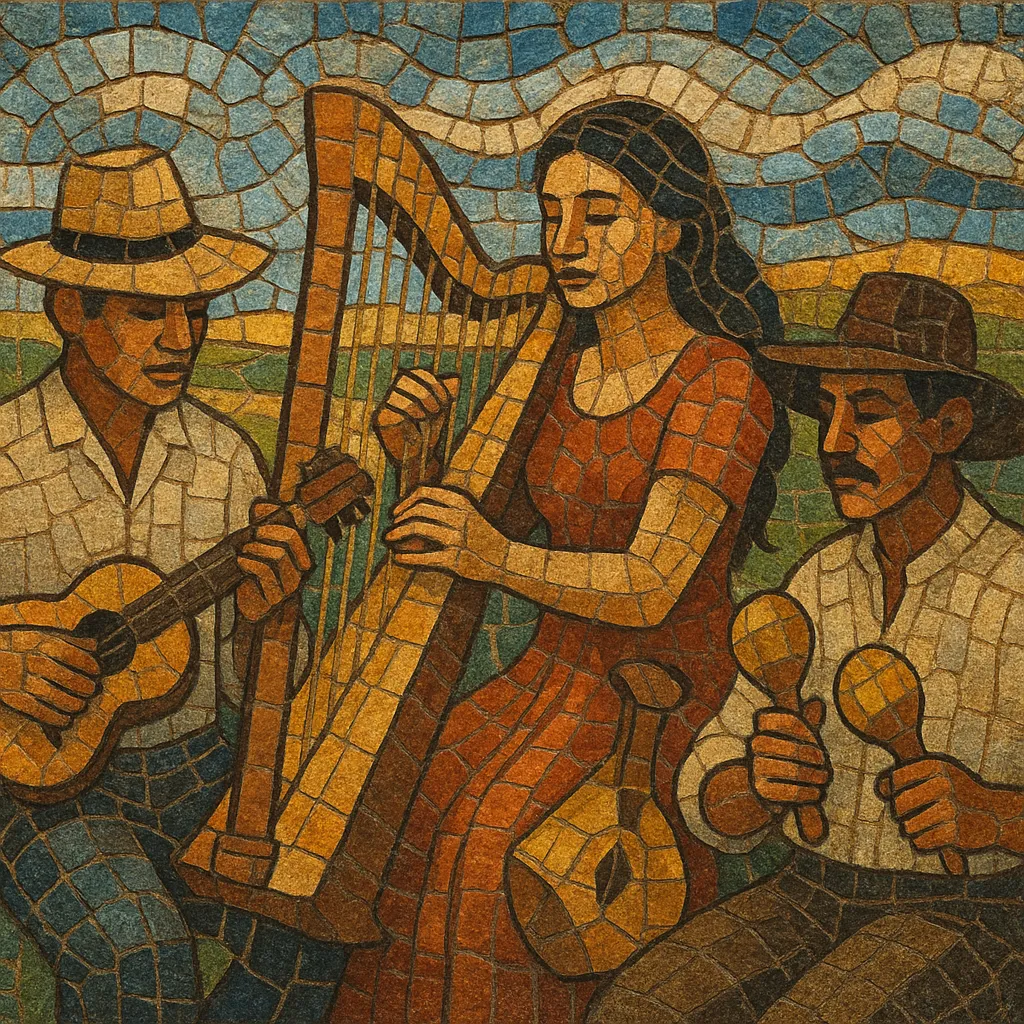Folclor llanero is the traditional music and dance culture of the Orinoco Plains (Llanos) shared by Venezuela and eastern Colombia. It centers on driving, syncopated rhythms that alternate and superimpose 3/4 and 6/8 feels, creating the characteristic joropo swing.
Its core ensemble features the arpa llanera (harp) carrying bass, harmony, and melodic riffs; the cuatro (a 4‑string small guitar) providing percussive strums and harmonic support; and maracas executed with virtuosic cross‑accents. In some subregions the bandola llanera (pear‑shaped lute) substitutes or complements the harp. Vocals range from lyrical pasaje ballads to rapid‑fire, improvised contrapunteo (sung duels).
Repertoires include fast danceable golpes (e.g., pajarillo, quirpa, seis por derecho) and slower, sentimental pasajes. Themes celebrate cattle‑ranch life, the vast plains, love, and the llanero ethos—resilience, freedom, and pride.
Folclor llanero emerged during the colonial era as Iberian dances and song forms (notably the fandango and jota) met Indigenous and African rhythmic sensibilities in the Orinoco Plains. The rural cattle‑ranch economy and horseback culture shaped its aesthetics: energetic dance music for festivities and strophic songs for daily work and storytelling. By the 1800s, the harp–cuatro–maracas trio and the characteristic 3/4–6/8 hemiola were consolidated, and joropo became a defining dance and musical umbrella within the llanero tradition.
As cities grew and radio expanded, llanero music spread beyond the plains. Early commercial recordings and regional festivals helped codify repertoires like golpes and pasajes. Virtuoso harpists and maraca players standardized techniques, while singers formalized poetic forms such as the décima and copla for performance and competition.
Artists such as Simón Díaz, Eneas Perdomo, and Cristóbal Jiménez popularized llanero music nationally and internationally. The style became emblematic of Venezuelan identity, while also thriving in Colombia’s Llanos Orientales. Repertoire diversified: narrative songs (cantos de vaquería, tonadas), romantic pasajes, and high‑speed dance pieces for joropo gatherings.
Contemporary ensembles and soloists modernized arrangements without losing rhythmic essence. Groups like Cimarrón brought the style to world‑music stages, highlighting percussive maraca artistry and harp innovation. Fusion projects (e.g., Onda Nueva) incorporated jazz harmony and pop forms, while competitions keep the traditional improvisational art of contrapunteo vibrant.


